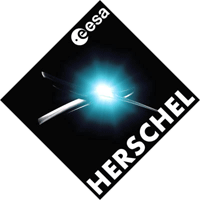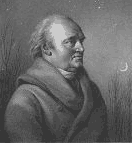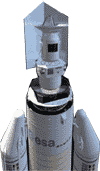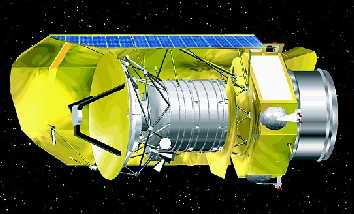 Mission objectives
Mission objectives
- to solve the mystery of how stars and galaxies were born
- to see dusty and cold regions that are opaque for other telescopes
- to investigate the clouds of gas and dust where new stars or planets may form
- to study cometary atmospheres packed with complex organic molecules
- to discover how the first galaxies formed and how did they evolve to give rise to present day galaxies like our own
About Project
 The HERSCHEL Space Observatory (formerly known as FIRST) is one of the most important mission planned by European Space Agency. It is the cornerstone number 4 (CS4) in the ESA `Horizon 2000' science programme. William Herschel (1738-1822) was an Anglo-German astronomer who discovered infrared light in 1800. Thanks to his discovery, astronomers can now observe a face of the Universe that remains hidden to other telescopes.
The HERSCHEL Space Observatory (formerly known as FIRST) is one of the most important mission planned by European Space Agency. It is the cornerstone number 4 (CS4) in the ESA `Horizon 2000' science programme. William Herschel (1738-1822) was an Anglo-German astronomer who discovered infrared light in 1800. Thanks to his discovery, astronomers can now observe a face of the Universe that remains hidden to other telescopes.
Infrared astronomy is as young as it is fruitful. In less than three decades infrared astronomers have unveiled tens of thousands of new galaxies, and have made discoveries as surprising as the huge amounts of water vapour that fill the galaxy. Yet scientists know there is still much more to discover. Objects such as other planetary systems, or processes like the birth of galaxies in the early universe, can best be studied with infrared space telescopes in space.
Launch in 2009

After detailed studies, ESA has decided to launch HERSCHEL together with PLANCK, another ESA scientific mission to study the Cosmic Microwave Background radiation. The two spacecrafts were launched on one Ariane-5 Launcher on 14 May 2009. They were separated shortly after launch and now are operated independently from their orbits. Ariane 5 rocket carried above 4,5 tons of payloads (3000 kg for Herschel scientific instruments and 1500 kg for Planck).
HERSCHEL is orbiting a virtual point in space called the 2nd Lagrangian point (L2) in the Sun-Earth system. This point is located 1.5 million kilometres away from Earth (about 4 times the distance of the Moon), in the opposite direction to the Sun. This position has two important advantages: it allows HERSCHEL to avoid the strong far-infrared emission from the Earth and the Moon, and because the Earth and the Sun are in the same general direction, it offers good sky visibility for performing the astronomical observations.The transit time towards L2 lasted 6 months; the commissioning and performance verification was accomplished en route. It is foreseen minimum 3 years routine science operations.
 |
| Herschel Space Observatory |
Scientific instruments
The HERSCHEL satellite carries the infrared telescope and three scientific instruments. They were designed and developed by more than 40 institutions, mainly European, organized in three consortia:
- a high-resolution spectrometer HIFI,
- a photoconductor array aamera and apectrometer PACS,
- a photometer SPIRE.
The Herschel telescope is a Ritchey-Chrétien telescope, with a primary mirror diameter of 3.5 metres, the largest ever to be built. The three focal plane scientific instruments are a real technological challenge. The instruments has to be cooled down to below -271°C, less than three degrees above the absolute zero (-273°C). A cryostat full of superfluid liquid helium provides this very low temperature. Herschel is the only space facility ever developed covering the far infrared to submillimetre range of the spectrum (from 60 to 670 microns). It opens up a virtually unexplored part of the spectrum which cannot be observed well from the ground. Herschel gets a new look at the sky, at wavelengths never before observed in space.